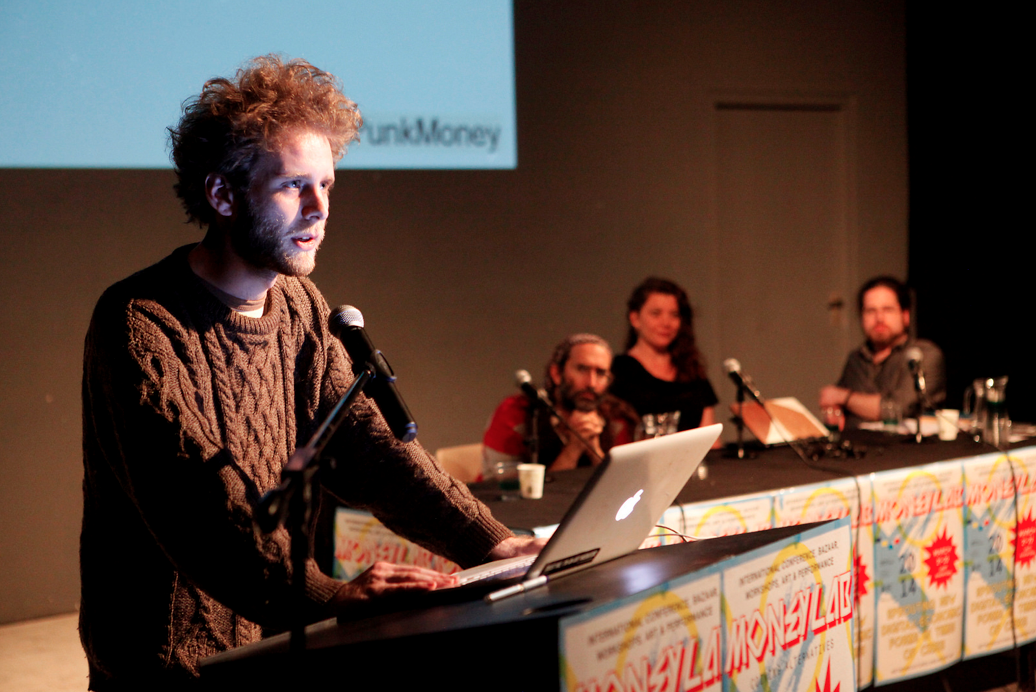At the crossroad between social media activism and performance art comes Eli Gothill and his project #PunkMoney.
Gothill, a young software developer and a blogger on the future of money, started his experiment in October 2011, a short time after the beginning of the Occupy protests. His motivation, he admits, was first of all a political one.
His project occurred to him after he started questioning:
“Can people create their own money? Do they only have to rely on centralized money to exchange?”
Based on this thought process, he decided to conduct an experiment about how anyone, from a Twitter account, could be able to create money.
From premodern China and Muslim Trade Routes to Twitter
“In the early ages, people were using anything they could find to create money. It is only later, in China, that paper was introduced. Above anything, money was based on a relation of trust”.
More than anything, his reflection focused on one specific kind of money: credit money. As he later explains, the origins of credit money can be found in the history of Muslim Trade Routes. Back then, credit mostly constituted of paper promises issued by merchants to one another. Above all, it relied on one’s honor and reputation.
“It was first of all a contract between two persons who trusted one another. Then, if you broke your promises, your reputation would become so bad that this prevented you from cheating.”
Building on these reflections, Gothill wondered if one could create money on a media as ubiquitous as Twitter. Though the use of a social network so often associated with Silicon Valley neoliberalism could appear odd, it’s Twitter’s transparency that made it the perfect platform for Gothill’s experiment.
Basic rules
Gothill explains:
“#PunkMoney is a promise currency anyone can create, transfer and redeem on Twitter”
As credit at its origins, it is based on an honor system and relies on trust rather than coercion, as current state money does.
Click here to watch Eli Gothill on PunkMoney at Digital Money Forum 2012 from PaymentsGeek on Vimeo.
Thanks to its simple set of protocols and gestures that can be used by anyone, nobody specifically owns PunkMoney.
Live demonstration
As his live demonstration shows, his idea is actually quite simple: by making their promises public, people feel more obliged to fulfill them.
“@Bob, I promise to buy you a beer #PunkMoney”
-@Sally
Why is Twitter so well-suited? It provides a unique identifier as well as a precise timestamp.
But besides those basic rules, PunkMoney can also use other optional ones:
-One can specify an expiry date (i.e.: “in one week”)
-One can indicate that the promise is “NT” (non-transferable)
Once a promise has been kept, it has to be redeemed by the recipient. Easy! Bob, after he has finished his beer, just has to favorite Sally’s tweet to acknowledge that redemption.
But let’s admit that, for some reason, our Bob here doesn’t want to get a drink with Sally and would rather transfer his credit to someone else. He can easily do so by tweeting the following, making Alice the new recipient of Sally’s promise:
“@Sally transfer @Alice #PunkMoney”
-@Bob
Further vision
To develop his concept, Gothill also worked on a tracker, an open source tool that anyone can deploy to a live server. By listing to the #PunkMoney hashtag, it can list most current transactions.
PunkMoney, as a decentralized, peer-to-peer currency, has no unit of account. “It is designed to encourage the flow of gifts rather than market-based transactions” and enables community building.
“The vision is of a fully decentralized money network for friends, communities and movements.”
Above all, it’s casual money which reminds us that money, rather than something universal, should be considered like language: just one way among others to enable relationships, something that everyone should be able to use and that isn’t owned by any.



